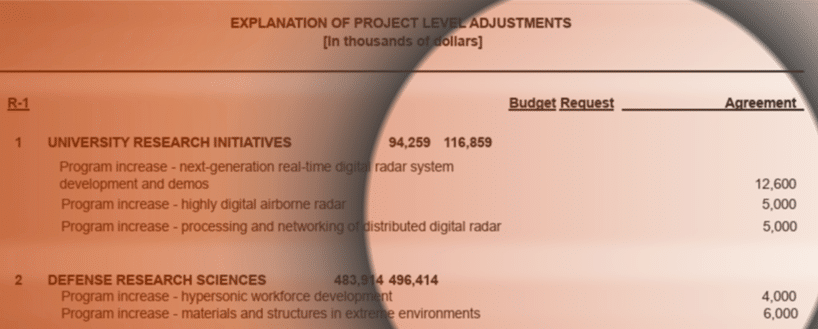In a federal budget request that has more than the average number of outrageous proposals, hold on to your hat – you’re about to be further outraged.
Tucked away in the language of the Pentagon spending bill, H.R. 3219, (which is further buried in the Make America Secure “minibus”) are the seeds of a new budget gimmick, “The National Defense Restoration Fund.” I say tucked away because there is almost no explanatory language. Usually when a major new initiative is proposed in an appropriations bill, there is a discussion of the reason for, and goals of, the new program in the explanatory committee report that accompanies the bill. And, usually, the press release mentions the meaning or reasons for the initiative.
But there’s none of that this time. It’s almost as if they don’t want anyone to notice.
Instead, scattered throughout the bill and report language are references to additional funding for the National Defense Restoration Fund in various appropriations accounts, both base budget accounts and the already slushy “war” accounting lines. Add those two funding subsets together, and you get the following subtotals for this new account:
- Procurement: $18,622,931,000
- Operations and maintenance: $7,000,000,000
- Research development test and evaluation: $2,000,000,000
- Personnel: $1,000,000,000
That’s a whopping $28.6 billion with $9 billion of that in the war fund. This is yet another slush fund in the largest discretionary budget in the federal government. Why do I say that? The secretary of defense only has to give 30 days prior notice to spending the funds. And his expenditures only have to meet the very vague requirement of being “programs, projects and activities necessary to implement the 2018 National Defense Strategy.”
Careful readers of this column will have noticed that I often opine against the abuse of the existing war fund, officially called the Overseas Contingency Operations account. What began in the 1990s as a transfer fund to restore Army accounts that were being depleted by unexpected activities in the Balkans, this so-called war budget ballooned up to nearly $187 billion at the height of the wars in fiscal year 2008.
The pending budget request for fiscal year 2018 is for $64.6 billion for the Pentagon war account. Because this account is considered “off budget,” it doesn’t count against the caps put in place by the Budget Control Act of 2011. For this reason, the account has become a political football with each committee adding more and more money. The House Appropriations Committee, for instance, proposes to spend $73.9 billion in the off budget gimmick account in the coming fiscal year.
Publicizing budget details is complex enough without all these added slush funds. Adding the “National Defense Restoration Fund” to this mix adds more complexity and, yet, less oversight. Allowing the secretary of defense to spend close to $30 billion on no more than 30 days notice could set the land speed record for waste.
There’s a movement afoot, led by Reps. Keith Ellison, D-Minn., and Jason Lewis, R-Minn., to thwart this new slush fund. My organization supports this effort, and I hope fiscal conservatives in Congress will act to kill this wasteful new account.











Get Social